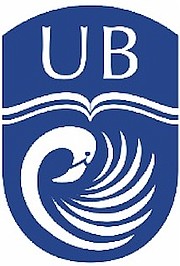By FARRAH JOHNSON
THE University of The Bahamas has announced its plan to partner with a number of ministries to implement a new Regulatory Authority Information System (RAIS) software, which will facilitate the management and inventory of all radiation sources in the country.
The multi-agency initiative includes 14 representatives from the Bahamas Department of Environmental Health Services, the Customs Department, the Ministry of Foreign Affairs and the Ministry of Health, which will be trained to create the inventory nationally.
“This initiative is something that is going to affect all Bahamians in the sense that this about the management of radiation sources within The Bahamas,” said Danny Davis, UB assistant vice president, on Wednesday.
“Right now that inventory exists but it exists on maybe an Excel spreadsheet here, or some papers here and there. [Now] we’re going to have one centralised approach to the inventory across the whole country,” he explained.
Mr Davis added that while The Bahamas does not have any “nuclear weapons or reactors,” there are still a number of radiation sources within the country that are used “as a part of everyday life.”
“If you think about x-rays at the dentist office [and] x-rays at the hospital, they all involve radiation sources...so this is another factor [in which] we can see where the management of these sources become important for us as a country,” he said.
Mr Davis said the university is “happy” to know that officials now have a server installed with software that will allow them to manage the inventory efficiently.
He explained that the RAIS Software, which is used in 85 countries across the globe, will allow them to “improve their licencing processes,” as well as help the group “track radiation sources from cradle to grave.”
“It allows us at any given point in time to know what we have in [the] country and what’s leaving the country. It allows us to know at any given point in time where [radiation] sources are [and whether] they’re in service or they’re decommissioned...so we don’t have a case where at the end of the life of a piece of equipment its improperly disposed of.
“We’re ensuring now from the time it lands in the country to when it goes out of service its fully managed,” he explained.
Dragan Avramovski, an information systems specialist for the International Atomic Energy Agency (IAEA), explained that the RAIS software was created by the agency to “assist member states in managing their regulatory control programme radiation sources.”
He explained that while the system does offers a “common and consistent approach to managing radiation,” it is also flexible enough to be adjusted “to fit to the local needs of the member states.”
Mr Avramovski furthered that “nearly three quarters” of the countries that have the software have already performed various “customisations,” adding that the software installed at the university has also been adjusted to suit “local needs.”
“With this training actually we are bringing this expertise to The Bahamas to all the stakeholders [and] to various institutions and agencies to successfully collect this essential information on establishing a national registry of sources,” he said.





Comments
Use the comment form below to begin a discussion about this content.
Sign in to comment
Or login with:
OpenID